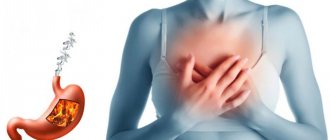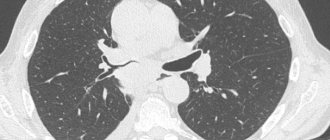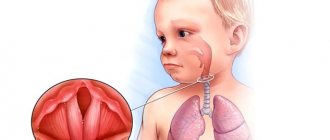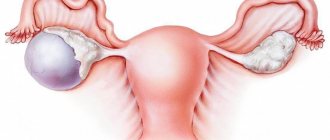Infectious disease specialist
Sinitsyn
Olga Valentinovna
34 years of experience
Highest qualification category of infectious disease doctor
Make an appointment
The vast majority of Russians know that consuming low-quality canned or smoked products can lead to a serious illness - botulism. This is an acute disease of infectious-toxic origin, caused by the pathogen Clostridium botulinum and the toxic product of its vital activity, which is a powerful poison of biological origin. It is botulinum toxin that makes the disease extremely severe and often fatal.
What is botulism
The bacteria Clostridium botulinum is ubiquitous in the soil, however, due to the high demands of microorganisms on conditions for reproduction, the disease rarely occurs in humans. For example, in Moscow, about 15-20 cases of botulism are registered annually, and in Russia as a whole - no more than 200 cases per year.
For rapid sustainable growth of the population of clostridia, which is the causative agent of botulism, the absence of oxygen and a favorable temperature within 30-35 degrees Celsius are necessary. Most often, such an environment is created during home canning in a hermetically sealed jar, salting and smoking. The bacterium multiplies rapidly in the canned product, releasing a toxin abundantly. The higher the number of bacteria in a product, the more botulinum toxin it contains and, accordingly, the higher the risk of poisoning. Bacteria can also multiply in the human intestine; in this case, the disease develops more slowly.
The botulism bacillus Clostridium botulinum exists in two forms - vegetative - capable of reproduction, and spore - extremely resistant to adverse external factors. The vegetative form of the bacterium can withstand contact with sodium chloride solution, acidic environment and spices, but cannot tolerate the presence of oxygen. It can remain viable for several years, but will not withstand 15 minutes of boiling. The spore form of botulism is even more stable: it persists for several decades, can withstand up to 6 hours in boiling water, and can withstand freezing, drying, and exposure to 18% saline solution. The death of clostridia spores occurs after half an hour of autoclaving at a temperature of at least 120 degrees.
Botulism toxin has a fairly high stability: in nature it remains active for up to 118 hours, a high concentration of table salt (18%) does not have an inactivating effect on it. At the same time, the toxin is completely destroyed within 10 minutes when heated to 100 ° C and is inactivated by alkaline solutions (pH higher) and alcoholic beverages.
At the same time, the toxin is completely destroyed within 10 minutes when heated to 100 ° C and is inactivated by alkaline solutions (pH higher) and alcoholic beverages.
Are you experiencing symptoms of botulism?
Only a doctor can accurately diagnose the disease. Don't delay your consultation - call
Exposure and transmission
Food botulism
C. botulinum is an anaerobic bacterium, meaning it can only grow in the absence of oxygen. Foodborne botulism occurs when the bacteria C. botulinum grows and produces toxins in food before it is consumed. C. botulinum produces spores that are widely distributed in the environment, including soil, river and sea water.
Bacterial growth and toxin production occur in foods with low oxygen content and under certain combinations of storage temperature and preservation parameters. This most often occurs in lightly preserved foods, as well as in foods that have not been properly processed, canned or bottled at home. In an acidic environment (pH less than 4.6), C. botulinum does not develop, and therefore the toxin is not produced in acidic foods (however, low pH does not destroy toxins previously produced). Low storage temperatures combined with certain salt and/or acidity levels are also used to prevent bacterial growth and toxin production.
Botulinum toxin is found in a wide range of foods, including low-acid canned vegetables such as green beans, spinach, mushrooms and beets; fish such as canned tuna, fermented, salted and smoked fish; and meat products such as ham and sausages. Food products vary from country to country and reflect local dietary habits and food preservation techniques. Sometimes botulinum toxins are found in industrially prepared products.
Although C. botulinum spores are resistant to high temperatures, the toxin produced by bacteria that develop from spores under anaerobic conditions is destroyed by boiling (for example, at an internal temperature of >85C for five minutes or more). Therefore, the most common cause of human botulism is ready-to-eat foods in packages with low oxygen content.
To determine the cause and prevent further cases of illness, samples of foods implicated in suspected cases must be immediately obtained, placed in appropriate sealed containers, and sent to laboratories.
Infant botulism
Infant botulism occurs mainly in children under 6 months of age. Unlike foodborne botulism, which is caused by consuming already produced toxins in foods (see point a above), infant botulism occurs when children ingest C. botulinum spores, which develop into bacteria that colonize the intestines and produce toxins. This does not happen in most adults and children over 6 months of age because natural intestinal defense mechanisms, which develop later, prevent spore germination and bacterial growth.
Clinical symptoms in infants include constipation, loss of appetite, weakness, altered crying, and pronounced loss of head support. There are several likely sources of infection with infant botulism, but a number of cases have been associated with honey contaminated with the spores. Therefore, parents and caregivers should not give honey to children under 1 year of age.
Wound botulism
Wound botulism rarely occurs when spores enter an open wound and are able to multiply under anaerobic conditions. Symptoms are similar to foodborne botulism but may take up to two weeks to appear. This form of the disease is associated with substance abuse, particularly heroin injection.
Botulism due to inhalation
Botulism rarely occurs as a result of inhalation. Such cases do not occur naturally, but are associated, for example, with accidental or deliberate events (such as bioterrorism) that result in the release of toxins in aerosols. The clinical picture of inhalation botulism is similar to that of foodborne botulism. The average lethal dose for humans is estimated to be 2 nanograms of botulinum toxin per kilogram of body weight, which is approximately 3 times higher than in cases of foodborne botulism.
Symptoms appear 1 to 3 days after inhaling toxins, or over a longer period of time for lower levels of intoxication. Symptoms develop in the same way as with foodborne botulism, and at the final stage muscle paralysis and respiratory failure occur.
If exposure to a toxin through aerosol inhalation is suspected, additional exposure to the patient and others must be prevented. The patient's clothing should be removed and stored in plastic bags until thoroughly washed in soap and water. The patient should take a shower and immediately undergo disinfection.
Other types of intoxication
Theoretically, botulism can be transmitted through water as a result of ingestion of a previously produced toxin. However, given the fact that water treatment (such as boiling or disinfection with a 0.1 percent hypochlorite solution) destroys the toxin, this risk is considered low.
Botulism of undetermined origin is usually recorded among adults in cases where the source of food or wound botulism is not identified. These cases are comparable to infant botulism and can occur when the normal intestinal flora is altered by surgery or antibiotic therapy.
Adverse reactions to the pure toxin have been reported among patients for medicinal and/or cosmetic purposes (see Botox section below for further information).
Types of disease
Depending on the etiology, botulism can be:
- foodborne - this is the most common type of disease resulting from eating foods contaminated with Clostridium botulinum;
- wound – developing due to contact of the patient’s wound surface with a surface on which bacteria are present;
- children's - developing only in infants in the first six months of life due to parents' violation of hygienic recommendations for child care;
- respiratory - in this case, the pathogen enters the body through the respiratory system in the form of spores sprayed in large quantities into the air (for example, when using bacteriological weapons).
All of the listed varieties, except food ones, are extremely rare. Transmission of botulism from an infected person to a healthy person is impossible.
Botulinum toxin
The causative agents of botulism under favorable conditions (low oxygen levels) produce an exceptionally potent lethal neurotoxin. 0.000001 ml of liquid botulinum toxin administered intraperitoneally causes death in a guinea pig.
Botulinum toxin consists of two chains:
- The heavy H chain serves to attach the toxin to the surface of the nerve cell, after which the toxin can be taken up by endocytosis
- The light L-chain is a protease, an enzyme that destroys proteins of the SNARE complex - a protein machine with the help of which vesicles with a neurotransmitter are released into the synaptic cleft, transferring excitation from one neuron to another.
Botulinum toxins are protein in nature and have the following properties:
- are stored under normal conditions for about 1 year,
- preserved for years in canned foods,
- are not destroyed by food enzymes,
- The activity of botulinum toxin E is enhanced hundreds of times under the influence of the enzyme trypsin (its inactive form is produced by the pancreas).
Botulinum toxin is destroyed by alkali and boiling.
Rice. 5. Botulinum toxin consists of 2 chains - heavy and light.
Botulinum toxin does not interfere with the organoleptic properties of food products
The causative agents of botulism live in compost heaps, wounds of a sick person, in the intestinal tract of people, domestic and wild animals, waterfowl and fish.
They end up in the soil, in the silt of lakes and rivers, remaining in a spore-like state for a long time.
Then they fall on vegetables, fruits, grains, meat and fish. Toxins accumulate in canned food (fish and vegetables), salted fish, sausage, ham, salted lard, and mushrooms if the technology for their preparation has been violated. This often occurs when preparing canned food, fish and meat at home.
Botulinum toxins are produced only by bacteria that are exposed to conditions of a sharp decrease in oxygen, which is observed in canned food, sausages, ham, dried meat and fish, honey, wounds and abscesses of the patient.
Rice. 6. Swollen canned food may contain botulinum bacilli and perfingens bacilli. The jar is inflated by carbon dioxide, which is released by bacteria during reproduction.
- In the Russian Federation, botulinum toxin poisoning is most often recorded in connection with the consumption of canned mushrooms (group or familial outbreaks of food-borne botulism).
- In products with a dense structure (sausage, meat, fish), botulinum toxin is localized in a specific place. When consuming a contaminated product, only those individuals who consumed the contaminated pieces of food become ill.
- When wounds become infected with Clostridium botulinum, wound botulism can develop.
- Botulism in drug addicts develops when injecting “black heroin” contaminated with bacterial spores.
- Botulism in infants has been reported following consumption of foods containing honey.
Botulism develops when the bacteria themselves or their spores enter the body. Only vegetative forms of the pathogen produce toxin.
Rice. 7. In the Russian Federation, botulinum toxin poisoning is most often recorded in connection with the consumption of canned mushrooms (group or familial outbreaks of food-borne botulism).
Rice. 8. The source of the disease can be sausages produced with violations of technological processes.
How to avoid infection
According to the recommendations of Rospotrebnadzor, to prevent botulism you should:
- use only industrially prepared canned food;
- Do not under any circumstances eat canned food with a bulging lid;
- wash vegetables, fruits and mushrooms well from soil particles;
- Do not use vegetable products with signs of spoilage for home canning;
- quickly remove the entrails from caught or purchased fish, wash it well, and then store it in the cold;
- do not preserve, but pickle mushrooms and vegetables;
- Before using as food, boil canned foods for about half an hour to destroy botulinum toxin.
You should know that products contaminated with Clostridium botulinum are indistinguishable from quality food in taste, color and smell. The best way to avoid poisoning is to heat treat any canned food for 15-20 minutes. This will help avoid not only botulism, but also other intestinal infections that cause poisoning and inflammation of the gastrointestinal tract.
Diagnosis and treatment
Diagnosis is usually made on the basis of medical history and clinical examination, with subsequent laboratory confirmation including demonstration of the presence of botulinum toxin in serum, stool, or food, or culture of C. botulinum in stool, wound fluid, or food samples. Botulism is sometimes misdiagnosed as it is often mistaken for stroke, Guillain-Barré syndrome, or myasthenia gravis.
Once a clinical diagnosis has been made, antitoxin should be administered as soon as possible. Early administration of antitoxin is effective in reducing mortality rates. Severe botulism requires supportive care, such as mechanical ventilation, which may be required for weeks or even months. Antibiotics are not required (except in cases of wound botulism). There is a vaccine against botulism, but it is rarely used because its effectiveness has not been fully assessed and adverse reactions have been reported.
What happens in the human body
The incubation period for botulism is variable and can last from 2 hours to 5 days, but, as a rule, symptoms of poisoning appear within the first 2-6 hours after the bacteria and its products enter the body. Botulinum toxin begins to penetrate the blood already in the oral cavity. The main part of it is absorbed in the small intestine and then distributed throughout the body. The toxin very quickly affects nerve fibers, blocking the transmission of nerve impulses coming from the brain and spinal cord to muscle tissue. Because of this, the function of muscle fibers decreases or stops completely.
Paralysis affects the ocular and swallowing muscles, then the intercostal and diaphragm muscles. The peristaltic activity of the intestine decreases, the protective activity of leukocytes decreases, metabolic processes in red blood cells change, as a result of which the oxygen supply to tissues sharply deteriorates. A person experiences difficulty breathing, which will soon lead to death if immediate medical attention is not provided.
How to recognize botulism
The main symptoms of botulism include:
- dry mouth, nausea, change in voice, hoarseness, pain when swallowing;
- double vision, blurred vision (fog, spots before the eyes);
- drooping of the upper eyelid, dilated pupils, strabismus, ptosis;
- lack of facial expressions, pale skin, unsteady gait, poor coordination;
- symmetrical paresis and paralysis of the limbs, respiratory muscles (feeling of chest compression);
- bloating and abdominal pain, diarrhea 3-5 times a day.
If a person experiences at least one or two of the listed signs of botulism, it is necessary to immediately consult a doctor. Delay is fraught with the most serious consequences, since rapidly developing paralysis of the muscles of the respiratory system inevitably leads to the death of the patient.
Diagnosis of botulism in a medical facility includes laboratory tests aimed at detecting botulinum toxin and bacteria in the patient's vomit and blood. In addition, products that are believed to have caused poisoning are necessarily examined for the presence of a toxin.
Diagnostics
Early diagnosis of Botulism is extremely important. Botulism often wears “masks”, hiding under other diseases: Guillain-Barré syndrome, encephalitis, polio, Lambert-Eaton syndrome, meningitis. This significantly complicates diagnosis [5], [9–11], [14], [15].
In search of botulinum toxin, antibodies to the pathogen or DNA of the pathogen, material (urine, feces, vomit or blood) is collected from the patient and clinical and laboratory tests are carried out. An important method for confirming botulism is to demonstrate the effect of the toxin in mice. To do this, bacteria are isolated from patient material and injected into mice. In the presence of botulinum toxins, mice develop paralysis within 48 hours, which can be suppressed by administration of toxoid [12].
How are patients with botulism treated?
At home, first aid for botulism consists of transporting the patient to a medical facility as soon as possible. The faster this is done, the higher the chances of a successful recovery. At the same time, the patient’s stomach should be rinsed with an aqueous solution of baking soda (20 g per liter of water), given a cleansing soda enema and given enterosorbent.
The above actions will slow down the action of the toxin and help partially remove it from the body. However, they do not cancel calling an ambulance and transporting the patient to a medical facility, since with severe intoxication, the patient can very quickly develop paralysis of the respiratory tract and asphyxia, which leads to death.
Treatment of botulism at JSC "Medicine" (clinic of academician Roitberg)
Treatment of the disease includes the following:
- gastric lavage using a special probe to remove remnants of contaminated food;
- intestinal dialysis using a special solution;
- administration of antitoxic serum in accordance with the type of bacteria detected (A, C or E);
- administration of drugs for infusion therapy to accelerate detoxification, restore water and electrolyte balance, and eliminate protein disturbances;
- introduction of antibacterial drugs;
- measures to eliminate hypoxia and its consequences;
- treatment of complications of botulism.
Depending on the severity of the poisoning and overall health, treatment for botulism takes from several days to a month. However, with timely medical intervention and compliance with clinical recommendations, botulism is sooner or later completely cured, and the activity of the nervous system is restored without the slightest consequences for its functioning.
Questions and answers
What foods cause botulism most often?
Medical statistics show that the first place among the causes of botulism is occupied by home-canned food - pickled mushrooms and cucumbers, as well as home-smoked hams and dry-cured sausages. Less often, poisoning is caused by homemade pickles, smoked or dried fish, canned meat and fish. In rare cases, the source of infection becomes bee honey, potato salad with fried onions in a large amount of oil without subsequent heat treatment, and pickled bamboo shoots.
How can you become infected with botulism?
The source of botulism infection can be found in any products that have been in contact with contaminated soil or the intestinal contents of animals, birds, or fish that contain bacterial spores. Eating poorly washed food or home-canned foods prepared with insufficient sterilization conditions are the main sources of infection.
How to recognize botulism in a child?
Signs of botulism in children are indistinguishable from the symptoms of adults: abdominal pain, diarrhea, change in voice or crying pattern, in infants - inability to hold the head, etc. Since the disease develops very quickly, at the slightest trouble you should immediately consult a doctor. Timely assistance and compliance with clinical recommendations for botulism in children can avoid the worst consequences of poisoning.
Botulism. Newsletter N° 270. August 2013
| Authors: WHO |
Botulism
Key Facts
- Clostridium botulinum is a bacterium that produces dangerous toxins (botulinum toxins) in low oxygen conditions.
- Botulinum toxins are among the most potent lethal substances known today.
- Botulinum toxins block nerve functions and can lead to respiratory and muscle paralysis.
- Human botulism, caused by consumption of contaminated food, is a rare but potentially fatal disease if not promptly diagnosed and treated with an antitoxin.
- Foodborne botulism is often caused by eating foods that have not been properly processed. Special precautions must be taken when preparing canned or fermented foods at home.
Review
Human botulism is a severe, potentially fatal, but relatively rare disease.
This is an intoxication usually caused by the consumption of highly potent neurotoxins in contaminated foods. Botulism is not transmitted from person to person. Clostridium botulinum produces spores that are resistant to high temperatures and are widely distributed in the environment. In the absence of oxygen, these spores germinate, develop and begin to release toxins. There are seven different forms of botulinum toxin - types A - G. Four of them (types A, B, E and in rare cases F) cause human botulism. Types C, D and E cause disease in mammals, birds and fish. Botulinum toxins enter the body through the consumption of unprocessed foods in which bacteria or spores survive and produce toxins. The main cause of botulism is food intoxication, but it can be caused by intestinal infections in infants, wound infections, and by inhalation.
Symptoms
Early symptoms include severe fatigue, weakness and dizziness, usually followed by blurred vision, dry mouth, and difficulty swallowing and speaking.
Vomiting, diarrhea, constipation, and bloating may also occur. As the disease progresses, weakness may develop in the neck and arms, followed by damage to the respiratory muscles and muscles of the lower body. Paralysis can lead to difficulty breathing. The temperature does not rise and loss of consciousness does not occur. The cause of these symptoms is not the bacterium itself, but the toxin it produces. Symptoms usually appear 12–36 hours (minimum 4 hours and maximum 8 days) after exposure. Incidence rates for botulism are low, but mortality rates are high unless correct diagnosis is promptly made and treatment (early antitoxin and intensive mechanical ventilation) is not provided. The disease can be fatal in 5–10% of cases.
Exposure and transmission
Food botulism
Clostridium botulinum is an anaerobic bacterium, meaning that it can only grow in the absence of oxygen.
Foodborne botulism occurs when the bacteria Clostridium botulinum grows and produces toxins in food before it is consumed. Clostridium botulinum produces spores that are widely distributed in the environment, including soil, river and sea water. Bacterial growth and toxin production occur in foods with low oxygen content and under certain combinations of storage temperature and preservation parameters. This most often occurs in lightly preserved foods, as well as in foods that have not been properly processed, canned or bottled at home. In an acidic environment (less than 4.6), the development of Clostridium botulinum does not occur, and therefore the toxin is not produced in acidic foods (however, a low pH level does not destroy previously produced toxins). Low storage temperatures combined with certain salt and/or acidity levels are also used to prevent bacterial growth and toxin production.
Botulinum toxin is found in a wide range of foods, including low-acid canned vegetables such as green beans, spinach, mushrooms and beets; fish such as canned tuna, fermented, salted and smoked fish; and meat products such as ham and sausages. Food products vary from country to country and reflect local dietary habits and food preservation techniques. Sometimes botulinum toxins are found in industrially prepared products.
Although Clostridium botulinum spores are resistant to high temperatures, the toxin produced by bacteria that develop from spores under anaerobic conditions is destroyed by boiling (for example, at an internal temperature of >85°C for five minutes or more). Therefore, the most common cause of botulism is ready-to-eat foods in packages with low oxygen content.
To determine the cause and prevent further cases of illness, samples of foods implicated in suspected cases must be immediately obtained, placed in appropriate sealed containers, and sent to laboratories.
Infant botulism
Infant botulism occurs primarily in children under six months of age.
Unlike foodborne botulism, which is caused by consuming already produced toxins in foods (see point a above), infant botulism occurs when children ingest Clostridium botulinum spores, which develop into bacteria that colonize the intestines and produce toxins. This does not happen in most adults and children over six months of age because natural defense mechanisms that develop later prevent spore germination and bacterial growth. Clinical symptoms in infants include constipation, loss of appetite, weakness, altered crying, and pronounced loss of head support. There are several likely sources of infection with infant botulism, but a number of cases have been associated with honey contaminated with the spores. Therefore, parents and caregivers should not give honey to children under one year of age1.
Wound botulism
Wound botulism rarely occurs when spores enter an open wound and are able to multiply under anaerobic conditions. Symptoms are similar to foodborne botulism but may take up to two weeks to appear. This form of the disease is associated with substance abuse, particularly heroin injection.
Botulism due to inhalation
Botulism rarely occurs as a result of inhalation.
Such cases do not occur naturally, but are associated with accidental or deliberate events (eg, bioterrorism) that result in the release of toxins in aerosols. The clinical picture of inhalation botulism is similar to that of foodborne botulism. The average lethal dose for humans is estimated to be two nanograms of botulinum toxin per kilogram of body weight, which is approximately three times higher than in cases of foodborne botulism. Symptoms appear 1–3 days after inhalation, or over a longer period of time for lower levels of intoxication. Symptoms develop in the same way as with foodborne botulism, and at the final stage muscle paralysis and respiratory failure occur.
If exposure to a toxin through aerosol inhalation is suspected, additional exposure to the patient and others must be prevented. The patient's clothing should be removed and stored in plastic bags until thoroughly washed in soap and water. The patient should take a shower and immediately undergo disinfection.
Other types of intoxication
Theoretically, botulism can be transmitted through water as a result of ingestion of a previously produced toxin.
However, given the fact that the toxin is destroyed when water is treated (for example, by boiling or disinfecting with a 0.1% hypochlorite solution), this risk is considered low. Botulism of undetermined origin is usually recorded among adults in cases where the source of food or wound botulism is not identified. These cases are comparable to infant botulism and can occur when the normal intestinal flora is altered by surgery or antibiotic therapy.
Adverse reactions to the pure toxin have been reported among patients for medicinal and/or cosmetic purposes (see Botox section below for further information).
Diagnosis and treatment
Diagnosis is usually made on the basis of medical history and clinical examination, with subsequent laboratory confirmation including demonstration of the presence of botulinum toxin in serum, stool, or food, or culture of Clostridium botulinum in stool, wound fluid, or food samples.
Botulism is sometimes misdiagnosed as it is often mistaken for stroke, Guillain-Barré syndrome, or myasthenia gravis. Once a clinical diagnosis has been made, antitoxin should be administered as soon as possible. Early administration of antitoxin is effective in reducing mortality rates. Severe botulism requires supportive care, such as mechanical ventilation, which may be required for weeks or even months. Antibiotics are not required (except in cases of wound botulism). There is a vaccine against botulism, but it is rarely used because its effectiveness has not been fully assessed and adverse reactions have been reported.
Prevention
Prevention of foodborne botulism relies on good food preparation practices, particularly with regard to preservation and hygiene.
Botulism can be prevented by inactivating bacterial spores in heat-sterilized (eg, autoclaved) or canned foods or by inhibiting bacterial growth in other foods. Industrial heat pasteurization (vacuum-packed pasteurized products, hot-smoked products) may not be sufficient to kill all spores and, therefore, the safety of these products must be based on the prevention of bacterial growth and toxin production. Low temperatures combined with salt and/or acidic conditions inhibit bacterial growth and toxin production. The WHO brochure The Five Keys to Safe Food provides the basis for educational programs to train food handlers and consumers. They are especially important for preventing food poisoning. These are the following five principles:
- keep clean;
- separate raw from cooked;
- carry out thorough heat treatment;
- store food at safe temperatures;
- use clean water and clean food raw materials.
Botox
The bacterium Clostridium botulinum is used to produce Botox, a pharmaceutical drug used primarily for injection for clinical and cosmetic purposes. Botox uses purified and highly diluted botulinum neurotoxin type A. Treatments are performed in a medical setting according to the patient's needs and are generally well tolerated, although adverse reactions have been observed in rare cases.
WHO activities
Botulism outbreaks are rare, but they are public health emergencies that require rapid recognition to identify the source of infection, determine the type of outbreak (whether natural, accidental, or potentially intentional), prevent further cases of disease, and effectively treat affected patients.3 Success treatment largely depends on early diagnosis and prompt administration of botulinum antitoxin.
WHO's role in responding to outbreaks of botulism that may be of international concern is to:
- Surveillance and detection: WHO supports strengthening national surveillance and international alert systems to ensure rapid local detection of disease outbreaks and effective international response. WHO's main tool for surveillance, coordination and response is the International Food Safety Authorities Network (INFOSAN),4 which links national authorities in Member States responsible for managing food safety events. This network is jointly managed by FAO and WHO.
- Risk assessment: At the heart of WHO's response is a risk assessment methodology that involves determining the type of outbreak - whether it is natural, accidental or possibly intentional.
- Source isolation: WHO coordinates with national and local authorities to contain further spread of disease outbreaks.
- Providing assistance: WHO is coordinating international agencies, experts, national laboratories, airlines and commercial organizations to mobilize equipment, supplies and supplies needed for the response, including the supply and administration of botulinum antitoxin.
Some other WHO fact sheets:
- Campylobacteriosis. Newsletter No. 255. October 2011
- Enterohemorrhagic Escherichia coli (EHEC). Newsletter No. 125. December 2011
- Salmonella (non-typhoid). Newsletter No. 139. August 2013
- Trematode infections of food origin. Newsletter No. 368. April 2014
- Helminth infections transmitted through soil. Newsletter N°366. May 2014
- Obesity and overweight. Newsletter N°311. January 2015
- Schistosomiasis. Newsletter No. 115. May 2015
Back to section











